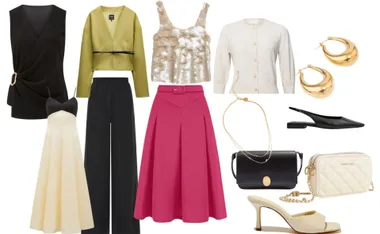In the late 1990s, the editor ofVogue, Kirstie Clements, was casting for swimsuit models in Sydney, but she decided none of the gorgeous young women were “suitable” to wear a bikini.
As she gave up and went to purchase a sandwich at the cafe across the road, she passed the Northside Clinic, which specialises in treating eating disorders.
Inside, she could see the “pale, young, female patients on portable IV drips, smoking in the courtyard in their dressing gowns”.
“The sad irony did not escape me,” wrote Clements in her autobiography, published earlier this year.
The shocking revelations coincided with Australian Fashion Week, at which frighteningly thin girls took to the catwalk in Sydney. The alarming trend, highlighted byThe Daily Telegraphin a series of reports at the time, was what Clements called “Paris-thin”.
These young women had just returned from the European catwalks, where being anorexic is expected and where, according to Clements, the intermittent hospitalisation of some of the top models is almost unremarkable.
To the general public, the sight of these girls on a Sydney catwalk was a scandal. Yet, from the fashion-pack, there was a world-weary response, with fashionistas pointing to the cyclical nature of this debate and a general view that there is precious little they can really do about it.
Critics of Clements privately grumbled that it was all well and good for her to talk about it after she had leftVogue.
It is a fair point. Internationally,Voguehas been at the forefront of some of the fashion scandals. Yet I am grateful that someone in the industry is prepared to talk openly about the seriousness of the problem of underweight models.
This week, the federal government launched its second annual Positive Body Image Awards, to acknowledge companies and individuals taking a leading role in presenting positive body images.
While many magazines, websites, fashion houses and advertisers have struggled with the Photoshop debate, youth magazines have led the way, presenting unaltered images and declaring their pages “Photoshop free”.
As the editor-in-chief ofThe Australian Women’s Weekly, I have strived to respond to readers’ concerns about Photoshopped images by declaring when images have been altered and limiting our use of airbrushing.
The barrage of complaints I used to receive about airbrushing has now almost stopped, although when the image is provided to us or purchased, there is less control and the debate is easily reignited.
For example, our January cover, featuring Helen Mirren, concerned some readers, who wrote passionate letters about the need to present realistic images of women, regardless of their age.
As is often the case with major celebrities, we were regrettably unable to shoot our own cover. Yet, at the same time, the Mirren cover proved very popular with readers in terms of sales.
This highlights the difficulty of the problem. Actor Keira Knightley, who had her breasts digitally enhanced in a promotional shoot forPirates of the Caribbean, proved that not all celebrities are happy to be airbrushed.
Knightley told People magazine, “Okay, I’m on the cover of a magazine, but somebody else does the hair and the make-up, and airbrushes the f**k out of me. It’s not me, it’s something other people have created.”
She went on to say, “I did one magazine and found out you’re not actually allowed to be on a cover in the US without at least a C cup [bra size] because it turns people off. Apparently, they have done market research and found that women want to see no less than a C cup on other women. Isn’t that crazy?”
I am pleased to say I have never heard of anything so ridiculous in Australia. Yet as chairperson of the government’s awards program, I believe one way to tackle the problem is to encourage change by rewarding positive portrayals of women and men.
In France, for example, politicians have been agitating for laws which insist that all digitally enhanced images be identified. The warnings, which were likened to those around cigarettes, would apply to advertising, press photography and political campaigns.
The magazine industry was appalled, claiming “the camera always lies” and that it was absurd to suggest people could not distinguish between real life and fantasy.
One country leading the way on addressing the problem of anorexic models is Israel, which last year adopted legislation demanding fashion and commercial models have a Body Mass Index of at least 18.5.
It is also called the “Photoshop law” because it demands that computer-generated changes to make models appear thinner be noted along with the images.
Personally, I am against legislation, partly because the prospect of policing a breach of these laws would be a logistical nightmare. Yet the pressure is building here and the experience abroad goes to show that the smart businesses will act before the politicians do.
The 2013 Positive Body Image Awards are open for nominations. To enter, visit the Positive Body Image Awards website. Nominations close on June 21, 2013.











